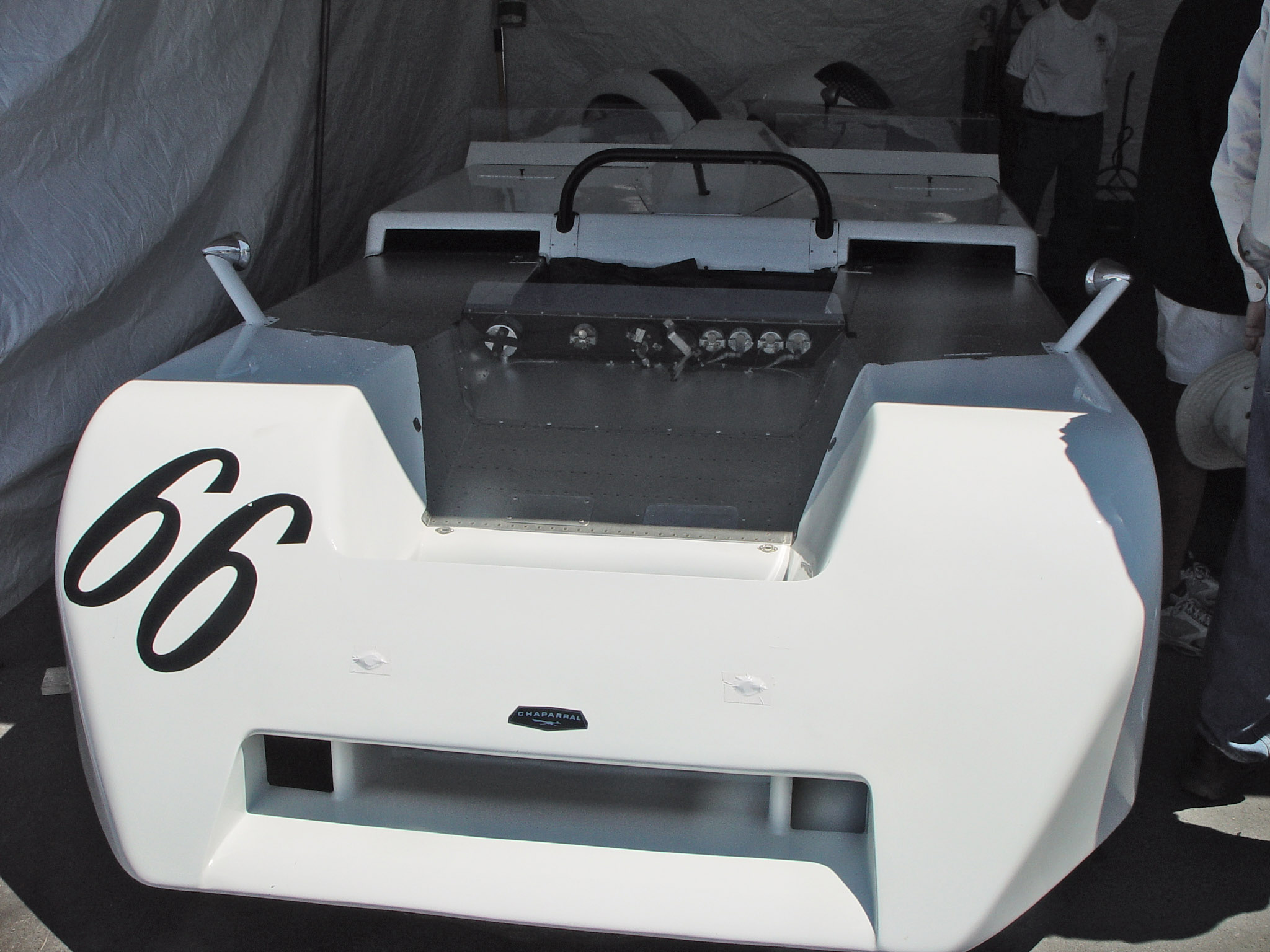Chaparral 2J on:
[Wikipedia]
[Google]
[Amazon]
The Chaparral 2J is a


sports prototype
A sports prototype, sometimes referred to simply as a prototype, is a type of Auto racing, race car that is used in high-level categories of sports car racing. They are purpose-built auto-sports race cars, as opposed to production-car based or s ...
race car, designed and developed by Jim Hall and Hap Sharp, and built by American manufacturer Chaparral
Chaparral ( ) is a shrubland plant plant community, community found primarily in California, southern Oregon, and northern Baja California. It is shaped by a Mediterranean climate (mild wet winters and hot dry summers) and infrequent, high-intens ...
. It conformed to Group 7 Group 7 may refer to:
* G7, an international group of finance minister
*Group 7 element, chemical element classification
*Halogens
The halogens () are a group (periodic table), group in the periodic table consisting of six chemically related c ...
regulations and competed in the 1970 Can-Am
The Canadian-American Challenge Cup, or Can-Am, was an SCCA/ CASC sports car racing series from 1966 to 1974, and again from 1977 to 1987.
The Can-Am rules were deliberately simple and placed few limits on the entries. This led to a wide variet ...
Championship series. It is an early example of a ground effect racing car.
Overview
The 2J was the most unusual Chaparral. On the chassis' sides bottom edges were articulated plastic skirts that sealed against the ground (a technology that would later appear in Formula One). Two fans adapted from a military tank engine were housed at the rear, driven by a single two-stroke twin-cylinder engine. The car had a "skirt" made ofLexan
Polycarbonates (PC) are a group of thermoplastic polymers containing carbonate groups in their chemical structures. Polycarbonates used in engineering are strong, tough materials, and some grades are optically transparent. They are easily wor ...
extending to the ground on both sides, laterally on the back of the car, and laterally from just aft of the front wheels. It was integrated with the suspension system so the bottom of the skirt would maintain a distance of one inch from the ground regardless of g-force
The g-force or gravitational force equivalent is a Specific force, mass-specific force (force per unit mass), expressed in Unit of measurement, units of standard gravity (symbol ''g'' or ''g''0, not to be confused with "g", the symbol for ...
s or anomalies in the road surface. The skirting produced a zone within which the fans could create a vacuum producing downforce on the order of 1.25 to 1.50 g when the car was fully loaded (fuel, oil, coolant). Tremendous gripping power and greater maneuverability at all speeds were produced. Since it created the same levels of low pressure under the car at all speeds, downforce did not decrease at lower speeds. With other aerodynamic devices, downforce decreased as the car slowed or reached too much of a slip angle.
The 2J competed in the Can-Am series and qualified at least two seconds quicker than the next fastest car, but mechanical problems limited its success. It only ran in the 1970 season, after which it was outlawed by the Sports Car Club of America
The Sports Car Club of America (SCCA) is a non-profit American automobile club and sanctioning body supporting Autocross, Rallycross, HPDE, Time Trial, Road Racing, RoadRally, and Hill Climbs in the United States. Formed in 1944, it runs ...
(SCCA). Although originally approved by the SCCA, they succumbed to pressure from other teams who argued that the fans constituted "movable aerodynamic devices". Sanctioning body FIA had banned such devices beginning with the 2E. There were also complaints of track debris sucked in and exhausted by the fans, hindering or even damaging the chasing cars. McLaren argued that if the 2J were not outlawed, the Can-Am series would be ruined by its dominance – though McLaren had been dominating since 1967.
Unusually, the Chaparral 2J only had three gears, being fitted in an automatic transmission, with the first gear providing . The engine overall was capable of producing at 7,000 revolutions per minute, with the max speed of roughly . The weight of the 2J was under .
Other car with similar method
A similar fan was used in Formula One eight years later on theBrabham BT46B
The Brabham BT46 is a Formula One racing car designed by Gordon Murray for the Brabham team, owned by Bernie Ecclestone, for the 1978 Formula One season. The car featured several radical design elements, one of which was the use of flat panel h ...
, which won the 1978 Swedish Grand Prix
The 1978 Swedish Grand Prix was a Formula One motor race held on 17 June 1978 at the Scandinavian Raceway. It was the eighth race of the 1978 World Championship of F1 Drivers and the 1978 International Cup for F1 Constructors, and the last Formula ...
; the company reverted to the fanless BT46 soon afterward due to concern for a rules violation. The car was later deemed to have been within FIA technical specifications.
Gallery


See also
* Gordon Murray Automotive T.50References
{{Reflist Sports prototypes Chaparral racing cars Sports racing cars Can-Am cars Controversial racing cars